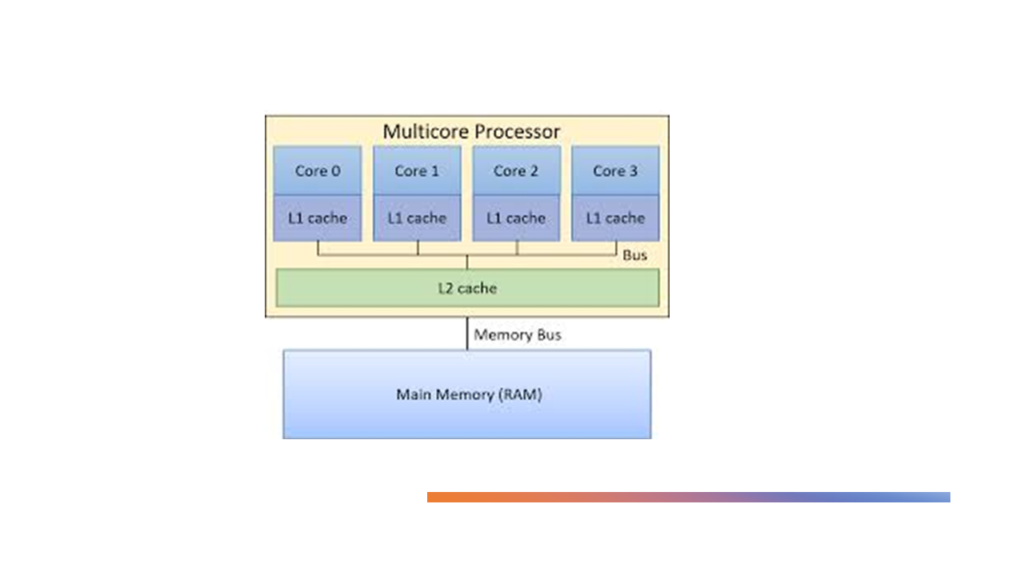- In any computer system, Central Processing System (CPU) is the heart of the system.
- But a powerful CPU alone does not make a powerful computer system, require memory sub-system and I/O sub-system.
- It receives instructions from both the hardware and active software and produces output accordingly.
- It then performs calculations, manipulates data, and produces output based on those instructions.
- It stores all important programs like operating systems that manage the computer’s resources and allows you to interact with it and application software that you use to perform tasks like word processing, web browsing, and gaming.
- CPU also helps Input and output devices to communicate with each other.
- The CPU translates these inputs from mouse and keyboard and it works with the relevant software program to produce the intended result.
- The CPU ensures that the input and output devices communicate without any troubles, whether it means printing a paper, playing music through the audio system, or showing text on the display screen.
- For all these features of CPU, it is often referred to as the brain of the computer.
- CPU is installed or inserted into a CPU socket located on the motherboard. Furthermore, it is provided with a heat sink to absorb and dissipate heat to keep the CPU cool and functioning smoothly.
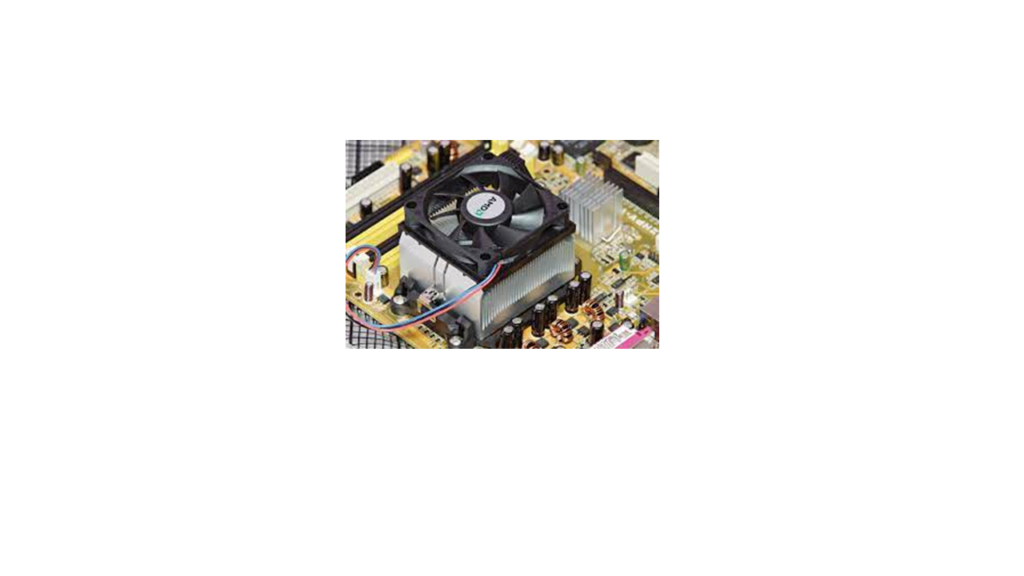

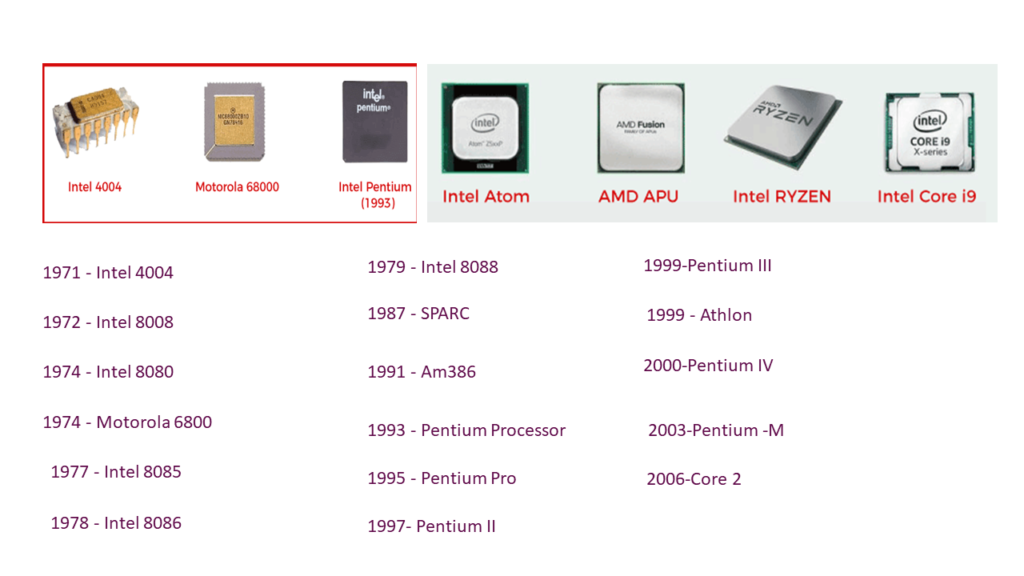

Components of CPU
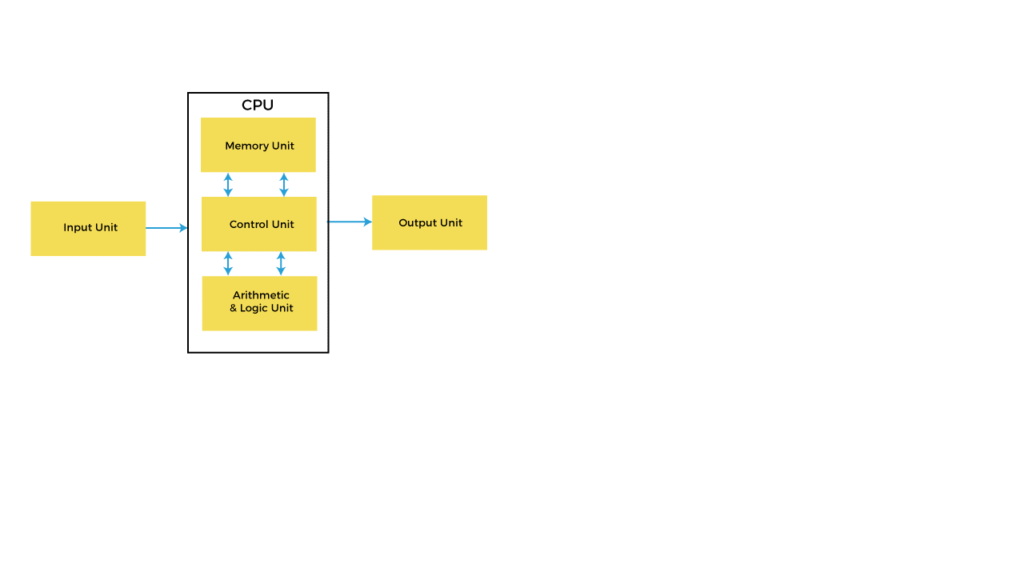
- The Control Unit (CU) is a vital part of the Central Processing Unit (CPU) and is accountable for the overall performance of a computer system.
- It is the circuitry in the control unit, which makes use of electrical signals to instruct the computer system for executing already stored instructions.
- It takes instructions from memory and then decodes and executes these instructions.
- So, it controls and coordinates the functioning of all parts of the computer.
- The Control Unit’s main task is to maintain and regulate the flow of information across the processor.
- It serves as a traffic controller, ensuring that information and instructions are efficiently transferred among the various elements of the computer system.
- It manages the order in which instructions are executed and synchronizes the activities of various units within the CPU.
- It does not take part in processing and storing data. Instead, it serves as an overseer, coordinating the actions of other CPU parts to guarantee that instructions are carried out accurately and in the right order.
The Control Unit achieves coordination within the CPU through a series of steps:
- Fetch: The Control Unit retrieves an instruction from the computer’s memory.
- It accomplishes this by accessing the memory location provided by the program counter (PC), which contains the address of the next instruction to be executed.
- Decode: Once the instruction is fetched, the Control Unit decodes it.
- It breaks down the instruction into its constituent elements, which include the operation code (opcode) and any associated operands.
- The operands supply the data or memory locations on which the operation will be completed, while the opcode suggests the kind of operation to be done.
- Execute: After the instruction is decoded, the Control Unit initiates the execution phase.
- It coordinates the necessary actions within the CPU’s functional units, such as the arithmetic logic unit (ALU), to perform the specific operation indicated by the instruction.
- This may involve calculations, data manipulations, or control operations.
- Store: Once the instruction is executed, the Control Unit updates the necessary registers and flags to reflect the operation results.
- This could involve storing the result in a register, updating the program counter to indicate the address of the next instruction, or modifying status flags that provide information about the outcome of the operation (e.g., zero flags, carry flags).
- Repeat: After updating the necessary components, the Control Unit repeats the process by fetching the next instruction from memory.
- It increments the program counter to point to the next instruction’s address, and the cycle continues.
This fetch-decode-execute cycle is repeated for each instruction in the program, allowing the Control Unit to coordinate the sequential execution of instructions and ensure that the computer system performs the required tasks.
The Control Unit ensures the correct information flow and guides the CPU’s actions during this process.
It eventually aids in the general operation of the computer system by allowing the CPU to carry out the required operations and computations through the fetching, decoding, and execution of instructions.
- 1999-Pentium III
- It was introduced on February 26th.
- The SSE instruction was added to the previous model to speed up floating-point calculations.
- Like Pentium II, this processor was released in two versions: Celeron (low-end version) and Xeon (high-end version) (High-end version).
- The following processors are included in this family: Katmai; Coppermine; Coppermine T and Tualatin.
- PSN (Processor Serial Number) was introduced in the production process that formed the processor’s unique identity.
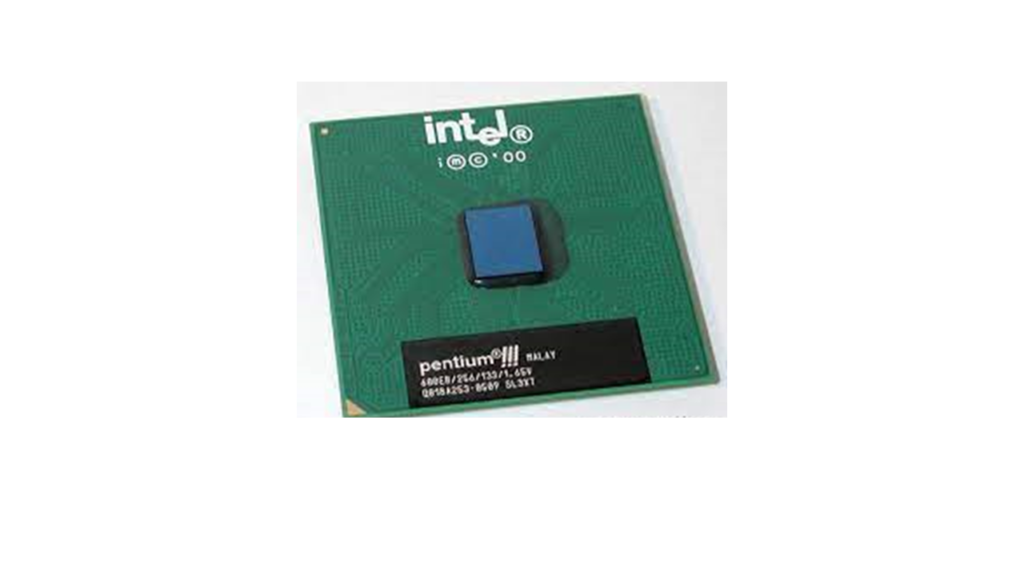
- 1999 – Athlon
- Athlon was announced by AMD on June 23.
- A clock speed of 800 MHz was achieved by using 37 million transistors.
- It came in a 453-pin PGA (Pin Grid Array) package.
- It was faster than Intel’s Pentium III, which made Athlon a legitimate competitor.
- That made it the first processor to reach the 1 gigahertz speed mark in history.
- Enhanced 3DNow! was first launched, which sped up by 2-4 times.
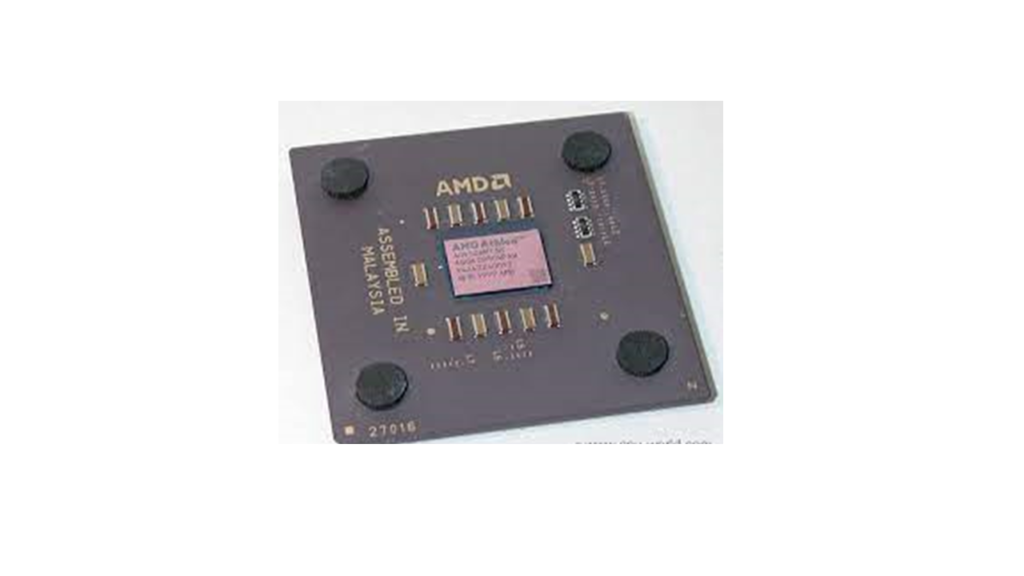
- 2000-Pentium IV
- Pentium IV was Intel’s new single-core processor, with clock speeds ranging from 1.3 GHz to 3.08 GHz.
- When it came to packaging, the 423-pin processor was available in both OLGA and PPGA (Plastic Pin Grid Array) formats.
- The processors that fall under this category include; Willamette; Northwood; Pentium 4-M; Mobile Pentium etc
- Processors in this family were the first to use the NetBurst architecture.
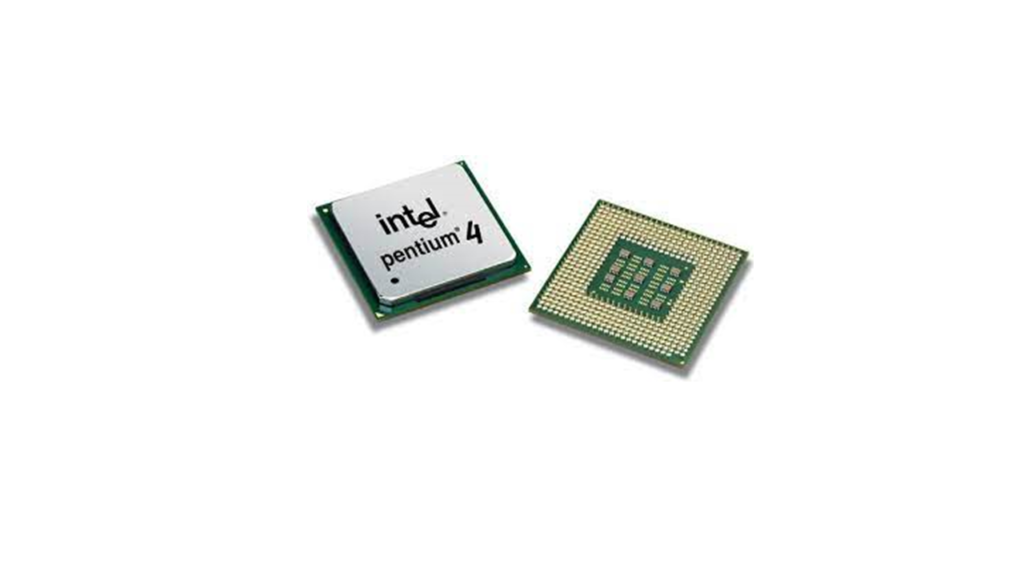
- 2003-Pentium –M
- This was an Intel single-core mobile processor.
- It was designed with a clock speed is 2.26 GHz.
- There are two processors in this family: Banias; Dothan.
- TDP of 24.5 watts and clock speed of 1.7GHz for Banias
- DOTHAN: Die of 90 nanometers and 2.16 gigahertz, with 21-watt TDP.
- It was used for the first time in the Intel Carmel notebook, Centrino-brand
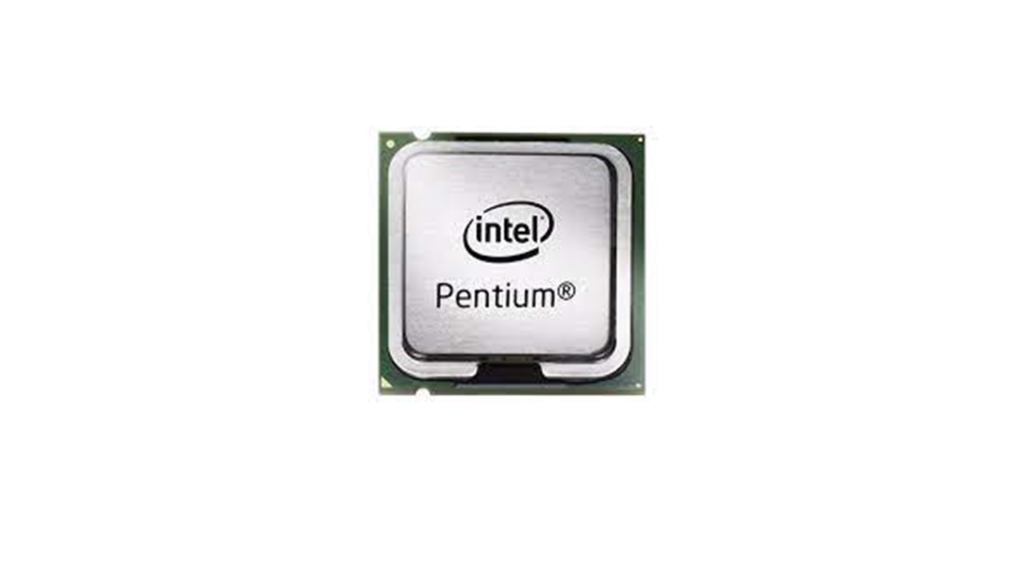
- 2006-Core 2
- E6320 is another name for Intel Core 2 brand, which was launched on July 27, 2006. It had clock speed of upto 3.5 GHz .
- Single-core, dual-core, and quad-core processors were introduced under this family.
- The processor is no longer available for purchase.
- The desktop processors under this brand include:
- The Conroe XE; Allendale; Wolfdale
- We have Allendale XE, Wolfdale XE, and more.
- This brand’s laptop processors include:
- Merom XE; Penryn; Merom
- As well as Merom-L and Penryn XE
- Using a slower clock speed, the processor was able to conserve battery power.
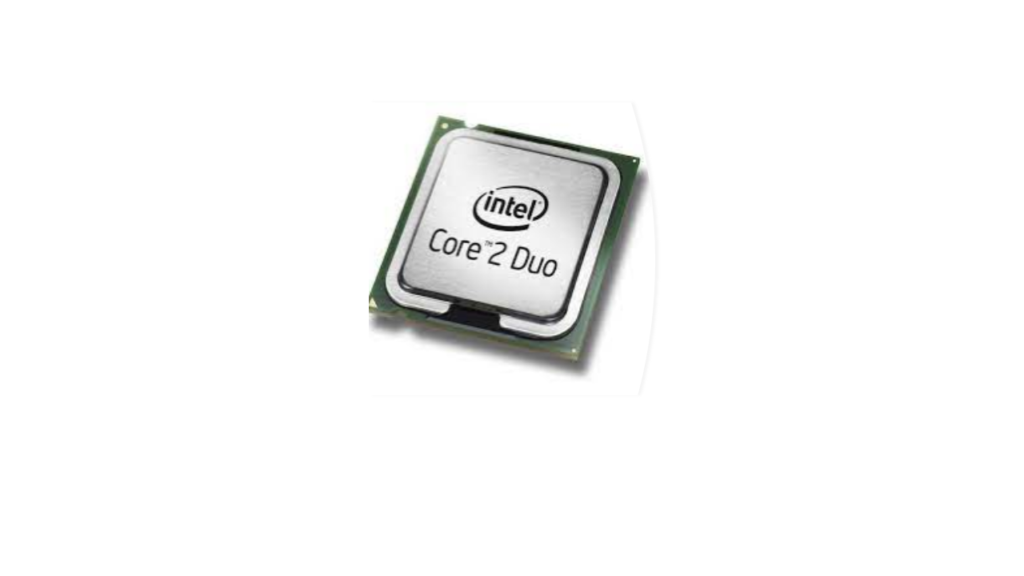
- Latest Technology- CPU
- Since the launch of the 4004 microprocessor, the technology has advanced significantly.
- A smaller chip, faster clocks, and larger caches have all resulted in a smaller chip and faster clocks.
- Products based on Intel’s microarchitecture were introduced in 2011.
- It has been able to produce dies with a 32-nanometer thickness.
- Included is Intel Quick sync, which is a hardware-based video encoding and decoding solution from Intel.
- Interconnecting the different parts of the processor is also made easier with an improved 256-bit/cycle ring bus connect.
- This processor has a transistor count of 2,27 billion.
- The designed clock speed is 3.6 GHz.
- The following series are part of this family : Intel Pentium: Celeron: Core i3: Core i5: Core i7: Core i7 Extreme: It has the vPro feature that has the ability to delete data from a hard drive via 3G signals or Ethernet or Internet.
- Latest – Fifth Generation CPU or Central Processing Units
- The fifth generation Central Processing Unit is based on Artificial Intelligence.
- A still-under-development Central Processing Unit.
- The use of voice recognition is an example of a current application.
- By the way, it’s still being worked on right now.
- AI aims to create an intelligent device that can respond to natural language input and can learn on its own.
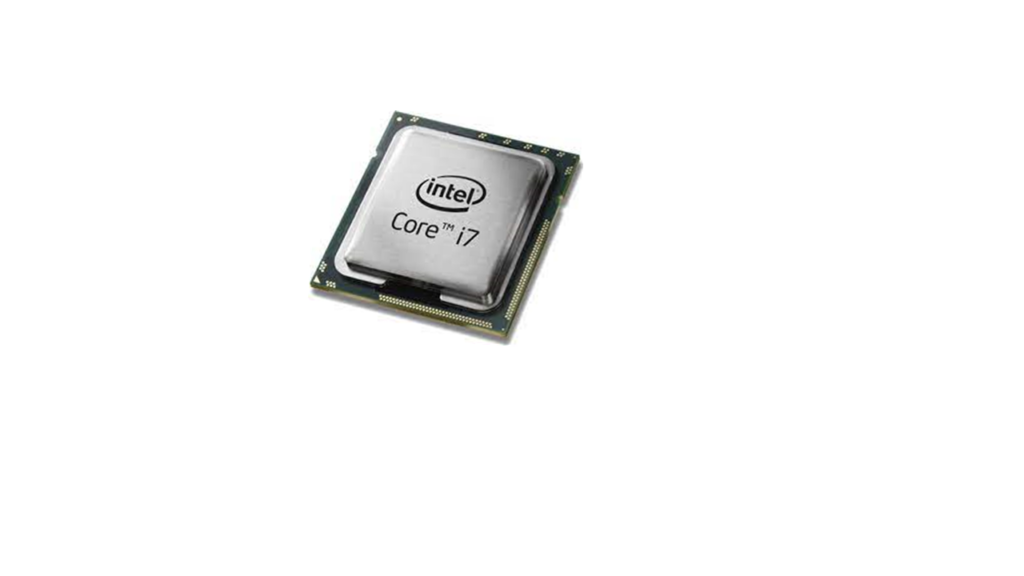
What is CPU Clock Speed?
•The clock speed of a processor, often known as the CPU clock rate, is an important component. The clock speed of a CPU or a processor refers to the number of instructions it can process in a second.
•It is measured in gigahertz. For example, a CPU with a clock speed of 4.0 GHz means it can process 4 billion instructions in a second.
•The number of instructions a CPU can execute in a specific time is determined by the CPU’s clock speed.
•Each instruction represents a fundamental CPU activity, such as transferring data or doing mathematical calculations.
•The clock speed determines how quickly these instructions are executed. A higher clock speed allows the CPU to process more instructions per second, enhancing overall performance.
•Modern CPUs also frequently use techniques like multi-core architectures and instruction pipelining to boost speed.
•To increase processing power overall, multi-core CPUs include numerous independent processing units (cores) that may carry out instructions concurrently.
•The CPU may execute many instructions simultaneously using instruction pipelining, significantly enhancing efficiency.
•Because of advances in semiconductor technology, CPU clock rates have been rising continuously over time.
•Early CPUs operated at clock speeds measured in megahertz (MHz), but with technological progress, GHz speeds became the norm. Some high-end CPUs even surpassed the 5 GHz mark.
Types of CPU:
CPUs are mostly manufactured by Intel and AMD, each of which manufactures its own types of CPUs. In modern times, there are lots of CPU types in the market. Some of the basic types of CPUs are described below:
•Single-Core CPUs
•Dual-Core CPUs
•Quad-Core CPUs
•Hexa-Core CPUs
•Octa-Core CPUs
•Multi-Core CPUs
Single Core CPU
•Single Core is the oldest type of computer CPU, which was used in the 1970s.
•It has only one core to process different operations.
•It can start only one operation at a time; the CPU switches back and forth between different sets of data streams when more than one program runs.
•So, it is not suitable for multitasking as the performance will be reduced if more than one application runs.
•The performance of these CPUs is mainly dependent on the clock speed. It is still used in various devices, such as smartphones.
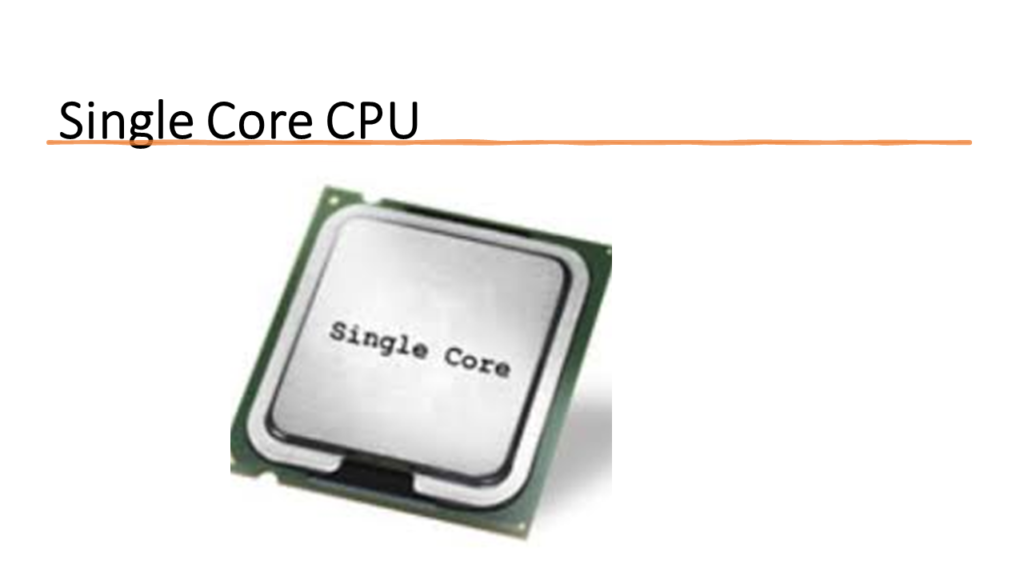
Dual Core CPU
•As the name suggests, Dual Core CPU contains two cores in a single Integrated Circuit (IC).
•Although each core has its own controller and cache, they are linked together to work as a single unit and thus can perform faster than the single-core processors and can handle multitasking more efficiently than Single Core processors.
•A dual-core CPU’s two cores enable the execution of many tasks in parallel.
•Each core can independently execute instructions, enabling parallel processing.
•This capability significantly improves multitasking performance compared to single-core processors.
•With dual-core CPUs, users can run multiple applications simultaneously without experiencing significant performance slowdowns.
•Dual-core CPUs offer benefits beyond multitasking.
•They can also enhance performance for single-threaded applications.
•Since each core can handle instructions independently, tasks that cannot be parallelized can still benefit from the dual-core architecture.
•One core can focus on running the main application, while the other handles background processes or system tasks.
•This division of work ensures a smoother user experience and improves overall system responsiveness.
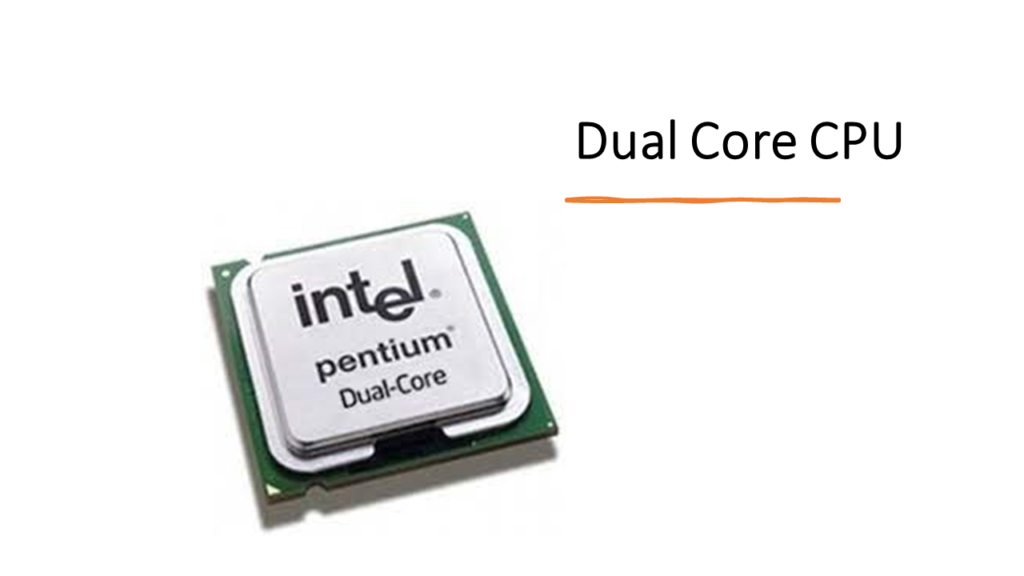
Quad Core CPU
•This type of CPU comes with two dual-core processors in one integrated circuit (IC) or chip.
•So, a quad-core processor is a chip that contains four independent units called cores.
•These cores read and execute instructions of CPU. The cores can run multiple instructions simultaneously, thereby increases the overall speed for programs that are compatible with parallel processing.
•Quad Core CPU uses a technology that allows four independent processing units (cores) to run in parallel on a single chip.
•Thus, by integrating multiple cores in a single CPU, higher performance can be generated without boosting the clock speed.
•However, the performance increases only when the computer’s software supports multiprocessing.
•The software which supports multiprocessing divides the processing load between multiple processors instead of using one processor at a time.
•Thanks to Quad-core processors’ ability to divide the processing burden among several cores, multiple processors can operate simultaneously instead of one at a time.
•Certain software supports this multiprocessing capacity, which improves productivity and speeds up processing times, especially for jobs that can be broken down into smaller subtasks and carried out concurrently.
•Quad-core CPUs, in particular, provide advantages in terms of increased efficiency and quicker processing for multitasking and computationally heavy jobs.
•With four cores, the CPU can divide the workload more equally, enabling quicker reaction times and more fluid multitasking.
•In jobs like video editing, 3D graphics, and gaming, where simultaneous execution of numerous tasks is essential, quad-core CPUs excel in parallel processing.

Hexa-Core CPUs
•Hexa-core CPUs are computer processors that include six separate cores on a single integrated circuit (IC) or chip.
•Each core functions as a separate processing unit that can perform computations and commands.
•With six cores, processing power may be boosted, and performance can be enhanced.
•The CPU can perform numerous tasks simultaneously with six cores by distributing the burden among them for more effective processing.
•Users may operate many programs simultaneously such as web browsers, video editing programs, and gaming programs.
•Hexa-core CPUs also excel in applications that demand significant computational power, such as video editing, 3D rendering, scientific simulations, and virtualization. These tasks can be distributed across multiple cores, resulting in faster processing and reduced waiting times.
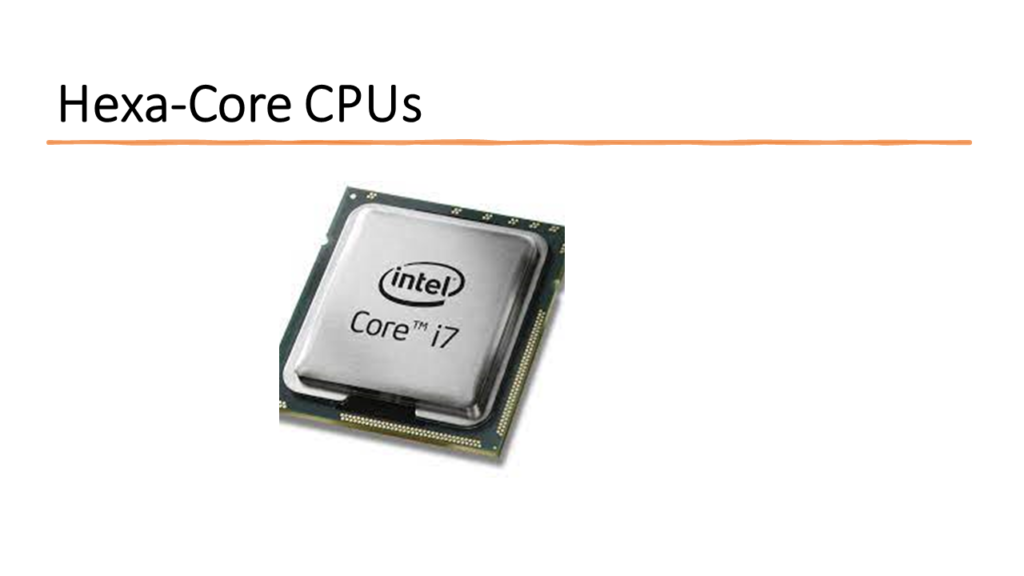
Octa-Core CPUs
•Octa-core CPUs are computer processors with eight separate cores on a single integrated circuit (IC) or chip.
•Each core performs as a separate processing unit that can perform calculations and commands.
•An octa-core CPU’s eight cores considerably boost processing power and overall performance.
•With eight cores, the CPU can effectively manage multiple simultaneous tasks.
•The workload is distributed across the cores, allowing for efficient processing and faster completion of tasks.
•This means users can run numerous applications simultaneously without experiencing significant performance slowdowns or system lag.
•The key advantage of octa-core CPUs is their ability to execute instructions in parallel.
•Each core can independently work on different tasks, allowing for concurrent processing.
•This parallel processing capacity enhances system performance overall and speeds up operations.
•It is especially beneficial for undertakings that may be divided into smaller tasks and finished simultaneously.
•Octa-core CPUs are best suited for computationally intensive software that requires many resources.
•High-definition video editing, 3D rendering, intricate scientific simulations, and virtualization are among the examples.
•These workloads may be effectively divided across several cores, resulting in quicker processing and shorter wait times.
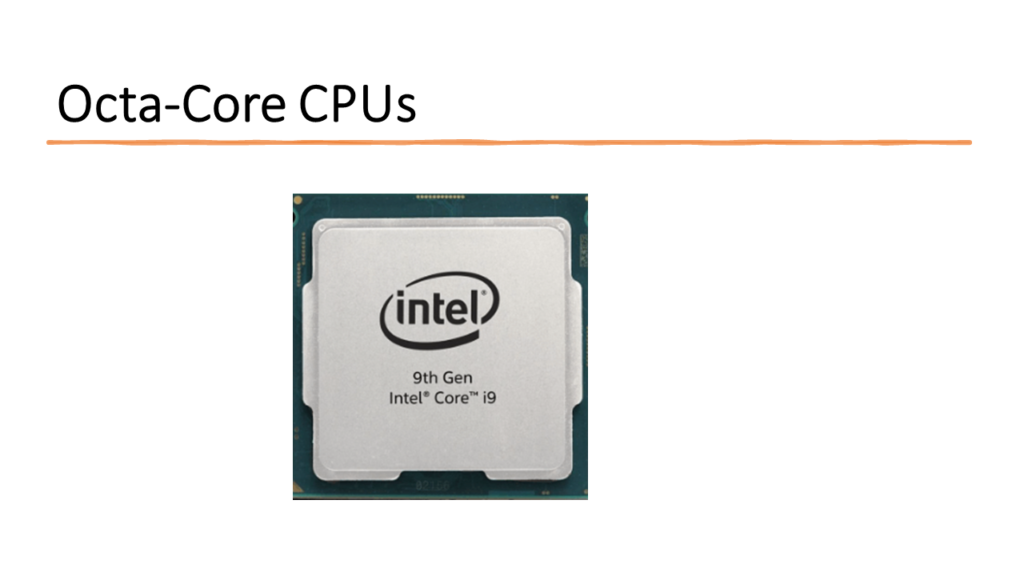
Multi-Core CPUs
•Multi-core CPUs, also known as multi-core processors, are kinds of computer processors that combine several independent cores onto a single chip or integrated circuit.
•Multi-core CPUs use two or extra cores that work collectively to execute instructions and do computations, in contrast to single-core processors, which rely upon a single core to complete all activities.
•The primary advantage of multi-core CPUs is their capability to deal with numerous tasks simultaneously, improving overall performance and efficiency.
•The CPU’s cores perform as separate processing units that can operate independently. Due to the CPU’s ability to distribute work across its cores through parallel processing, jobs may be completed more quickly and concurrently.
•Users may run numerous programs simultaneously on multi-core CPUs without suffering severe slowdowns or performance bottlenecks.
•For instance, each job may be given to a different core for effective processing, allowing you to browse the web, stream movies, and work on paper simultaneously.
•This multitasking feature makes the system more responsive overall and provides a more convenient user experience.
•Multi-core CPUs excel at performing computationally demanding activities in addition to multitasking.
•These processors can handle complicated activities like video editing, 3D rendering, scientific simulations, and gaming more effectively by distributing the burden among numerous cores.
•The ability to distribute the workload across cores results in faster processing times and reduced waiting periods.
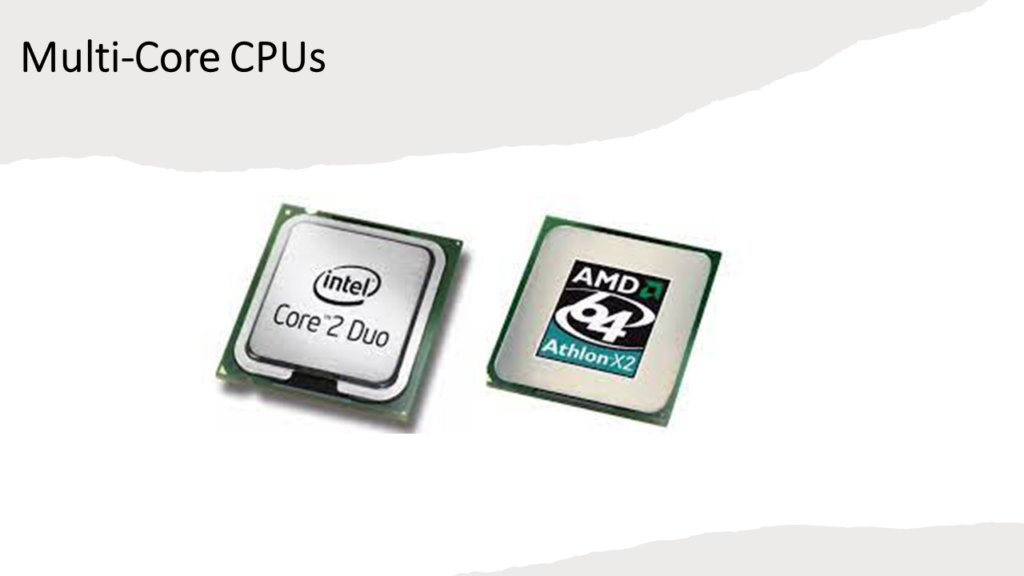
•As technology developed, multi-core CPUs increases and now provide better multitasking skills.
•These CPUs can execute several instructions simultaneously due to their numerous processing cores.
•Single-core CPUs are less popular in desktop and laptop computers, although they are still used in embedded systems and mobile phones.
•Smartphones often use single-core or dual-core CPUs that are particularly made for power efficiency to balance performance and battery life.
